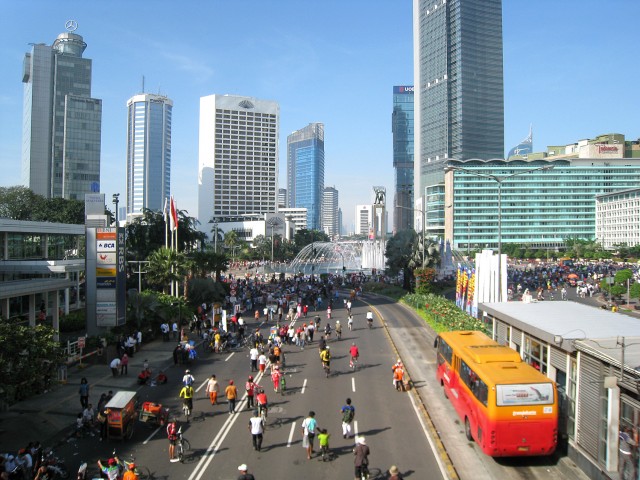Jakarta
JAKARTA, LOCATED on the island of JAVA, is the capital of INDONESIA and serves as a gateway to the country. Java is located in a chain of islands, with SUMATRA to the northwest, Bali to the east, BORNEO to the northeast, and CHRISTMAS ISLAND to the south. It is the world's 13th-largest island.
The huge city of Jakarta covers more than 410 square mi (650 square km) and has a population of over 9 million people. Besides serving as government headquarters, Jakarta is the center of Indonesian business and industry. Jakarta is different from other cities in Indonesia because it has the status of a province and its government is administered by a governor rather than a mayor.
Jakarta has a colorful history. As the port of Sunda Kalapa, it was the last Hindu kingdom in the area when the Portuguese arrived in 1522 to take advantage of the spice trade. Their tenure was short-lived, as they were driven out in 1527 by the Muslim leader Sunan Ganugjati. He named the city Jaykarta, meaning “City of Great Victory.” By the early 17th century, both English and Dutch merchants were in the area. When the Dutch took over Indonesia, they changed the name to Batavia. In World War II, the Japanese captured the city and changed its name to Jakarta, mainly to gain the sympathy of the Indonesians. When the war ended and Indonesia gained its freedom, the name Jakarta was retained.

The city has a definite cosmopolitan flavor and diverse culture. Jakarta attracts many immigrants whose cultures have contributed to the overall lifestyle of the city. The Taman Mini Indonesia Indah (Beautiful Indonesia in Miniature Park) pays tribute to the cultures of Indonesia's 27 provinces. The 250-acre (100-hectare) park is Jakarta's most visited attraction. Jakarta's major problems are the result of the rapid growth of the city in the past 40 years. During that time, the population has skyrocketed from 2.7 million to over 9 million. The government has not been able to provide for the basic needs of its residents. Jakarta suffers from floods during the wet season, when sewage pipes and waterways become clogged with debris. The depletion of the RAINFOREST on the hills south of the city has also contributed to flooding.
LIFE IN JAKARTA
About a third of Jakarta's population lives in abject poverty, many in squalid settlements made up of huts with earthen floors. They eke out a meager living by selling cigarettes, shining shoes, and scavenging food. The heat and smog of the city make it a hard existence. Traffic in Jakarta is horrendous, with motorcycles, three-wheeled taxis, dented buses, and pedicabs jockeying for position. Residents and tourists spend countless hours stuck in traffic jams. In an attempt to reduce traffic jams, some major roads now allow only cars with at least three people to be operated during rush hour. Other forms of transportation include railroads. Two monorail systems are being built, and the government is considering a network of water buses along the canals of Jakarta.